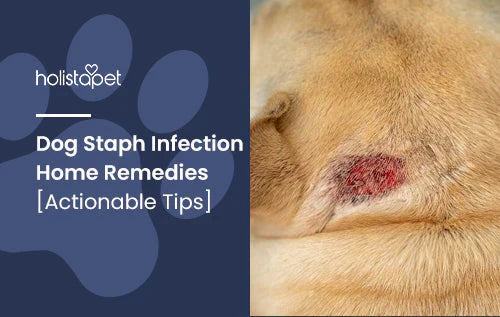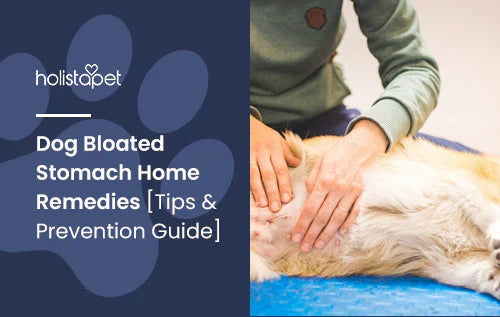We all know dogs like to play, they can get wound up and even become rambunctious. This type of behavior can lead to injuries, like scrapes, cuts, and even staphylococcus lacerations. If a wound festers, it puts the dog at risk of developing a bacterial infection, known as a staph infection.
Luckily there are plenty of preventive measures you can take to avoid this. If your dog does happen to get a staph infection, it is best to go to the vet. Fortunately, there are some home remedies that may help too. To help us better understand the problem, let’s start by taking a look at how staph infections occur and how to identify them.
Read More : CBD Oil For Dogs
What is a Staph Infection?
Staphylococcus bacteria is the cause of staph infections in dogs. A staph infection occurs when a skin irritation or wound becomes infected. Staph infections can affect any part of a dog’s body. Staph infections can be found in dogs of any age or breed. There are several types of staph infections that affect dogs, but most develop as skin infections.

The majority of bacteria from the Staphylococcus genus are normal inhabitants of the skin and upper respiratory tract of a dog, and most other animals, including humans, for that matter. Normally they never cause any harm to the dog’s innate immune system. However, if the dog experiences an injury or already has underlying illnesses, allergies, or is otherwise immune-compromised, healthy bacteria can turn into a threat.
When the skin becomes unhealthy, including a wound or crack, the blood supply to that area can become weakened. When this happens, the immune system’s protective mechanism is compromised, allowing a gateway for the staphylococcus bacteria to infect the skin. Once it occurs, a staph infection should never be left untreated, as staphylococcus can spread to internal organs and cause severe, and in some instances, life-threatening issues. The good news is addressing staph infections can be simple if they are treated quickly and cared for properly.
Areas of Staph Infections in Dogs
The most common staph infection type in dogs is staphylococcal dermatitis (or pyoderma). This kind of bacterial infection causes a dog’s skin to swell and become red. The staphylococcus already lives on a dog’s skin and remain dormant unless the skin becomes unhealthy or irritated. When this happens, an infection is more prone to develop. Staph is, therefore, known as an opportunistic pathogen.
Staph infections in dogs can affect several different areas of their body. At times, they can be tricky to notice, especially if a dog has a furry coat. There are a few things you can look out for, such as one specific area or discomfort in your dog. In most cases, signs of staphylococcus infection can be easily identified. Symptoms that your dog has a staph infected area can include:
- Blisters
- Papules
- Itchiness
- Red lesions
- Blisters that are filled with pus
- Scabs or crusts that surround the lesions
- Hair loss in the center of the lesion
Without proper care or attention, a staph infection can develop in a dog’s upper respiratory tract or in the internal organs causing further, and more serious, harm.
What Causes Staph?
Staph infections begin when bacteria enters a wound or skin irritation. Excessive licking, scratching, and chewing, often secondary to allergies or fleas, create small cuts (microabrasions) and irritated skin. This creates an ideal condition for the skin’s normal inhabitant, Staphylococcus, to take advantage of the skin’s compromised state, by entering the wound and causing a secondary infection. For those reasons, staph infections are more commonly seen in dogs who have fleas, dermatitis, or underlying allergies, allergy.
Some conditions that might make it easier for staph to take place are:
- Fleas
- Skin irritations
- Underlying illness
- Underlying allergies
- Diseases that weaken the immune system
- Poor hygiene
- Bacterial or fungal infections
In other cases, dogs that are exposed to contaminated or toxic substances that enter through the eyes, mouth, or nose are also at risk of getting a staph infection. Basically, anything that causes your dog’s immune system to work harder to fight off the bacteria can create an ideal situation for the opportunistic spread of staph.

Symptoms of Staph Infection in Dogs
The symptoms of staph infections in dogs can vary, depending on the severity and location of the affected area. Typical symptoms will be the most noticeable locally or regionally, near the wound. However, the bacteria can spread to the other parts of a dog’s body, especially if untreated. If your dog has a staph infection, it might appear lethargic, experience a loss of appetite, and become feverish.
Signs of a staph skin infection usually include:
- Pus
- Redness
- Crusting
- Sensitive skin
- Inflammation
- Skin abscess
- Hair Loss
If staph has infected the internal organs, there will be more serious signs of sickness that could include:
- Rash
- Fever
- Pain
- Itching
- Inflammation
- Loss of appetitewell-balanced dog food
- Lethargy
- Vomiting
- Diarrhea
Regardless of the type of staph infection, if it remains untreated, it can lead to more serious issues like blood poisoning and even death! If you think your dog might have a staph infection, it's best to consult with a veterinarian as soon as possible.
Prevention of Dog Staph Infections
Taking steps to prevent a dog from getting a staph infection can be extremely helpful in avoiding the nasty symptoms. The importance of good hygiene isn’t just for humans, it extends to pets as well. Ensuring your dog has good hygiene can help prevent an infection from developing. If your dog was recently exposed to sick animals or humans, in a place like a hospital or veterinary office, washing their paws and belongings can help keep bacteria at bay.
Maintaining a clean environment for your dog is optimal for their health. Their bedding and chew toys should be washed regularly. Keeping up with your dog's flea medicine may be another critical factor that can help prevent skin irritation. Not only is a pet free of fleas healthier and happier, but they are also less at risk for causing open wounds that invite staph infection.
Dogs with allergies should be put on allergy medication or other allergy therapy right away. Allergy treatments help prevent infection by controlling how inflamed the skin gets and restoring the innate immune system. It also helps reduce any unwanted itchiness. Being proactive when it comes to your dog’s health can only be beneficial to their overall wellness.
Always feed your dog healthy snacks and nutritious and well-balanced dog food. Regular physical activity is essential to the health of your pet too. Remember, a pet that leads a healthy and thriving life is less at risk of hosting a staph infection. If your dog does happen to get an infection, there are some things you can do to help.

Home Remedies for Dog Staph Infections
Depending on the severity, staph infection home remedies may be sufficient. Other times, a quick visit to the vet is necessary. Many times, a veterinarian will prescribe a topical antibiotic that you can apply directly to the affected area. Still, the most common staph infection treatment is anantibiotic. If the infection is on the skin, a vet might also prescribe antibacterial shampoo. It might take weeks of consistent therapy before you see results.
In addition to treating your dog’s staph infection with antibiotics, there are a few home remedies for dog staph infections you can try. Bathing your dog daily with a povidone-iodine medicated shampoo is generally a safe and effective method for treating minor staph infections. Combining prescribed medicine with the right at-home dog staph infection home remedies can help speed up your dog’s recovery.
Aside from a povidone-iodine wash, bathing your dog in cold water can help soothe their itchiness. If your dog doesn’t seem to mind, putting a damp T-shirt on them after their bath can help keep their skin cold longer.
Additional Tips
Remember to keep your dog’s wounds and infected skin clean. If your vet prescribed a cleansing ointment, make sure to apply that with gloves to reduce the risk of transferring the infection. If they prescribe antibiotics, make sure your dog finishes the prescribed course. Treating your dog is only half the work in ridding them of infection.
Keeping your dog's environment clean is an important step that is easy to overlook. We recommend throwing away any objects the dog may have contaminated, which includes towels, toys, blankets, and even bowls. If you can thoroughly wash and disinfect it, it might be ok to keep. If there is another dog with a skin infection or open wound, it’s best to keep your dog away from them. Keeping your dog from coming in contact with infected dogs or areas is crucial in avoiding the spread of staph.
Monitor Scratches & Lacerations
You should closely monitor any scratches or lacerations your dog has until they heal properly. Look out for any discharge, inflammation, itchiness, or redness. Keep your dogs from scratching, biting, or licking any wounds, as this behavior will usually make the situation worse by preventing healing, causing further spread, and contributing to a dog staph infection home remedies infection.
When you combine the right amount of staph infection home remedy procedures and medical treatments, a dog may heal from an infection much faster. If a staph infection gets worse or is taking too long to resolve? It’s best to take your dog back to the vet. To reduce the risk of an unwanted drug reaction, let your veterinarian know if your pet is taking any dog supplements or is undergoing any at-home treatments.
Keep in mind, staph infections can be tedious and take a while to heal. Monitoring your dog’s progress can ensure they are on the right path to recovery. Keeping a log might also prove useful if you need to return to the vet or another infection ensues.

Final Thoughts - Dog Staph Infection Home Remedies
In conclusion, while dogs love to play and explore, it's essential to keep an eye on any injuries they may sustain to prevent infections like staph. Prompt attention to wounds, good hygiene practices, and regular vet visits can significantly reduce the risk of your dog developing a staph infection. If your dog does contract an infection, a combination of prescribed treatments and home remedies can help them recover more quickly.
Always monitor your pet’s condition closely, and don't hesitate to consult your vet if the infection persists or worsens. Your vigilance can make all the difference in your dog's health and well-being.







![Probiotics For Dogs [Soft Chews] - HolistaPet](http://www.holistapet.com/cdn/shop/files/Probiotic-Infographic-1_472d7a29-e30c-435a-9638-1365d8c3a9f9.jpg?v=1725384841&width=104)



























Leave a comment
All comments are moderated before being published.
This site is protected by hCaptcha and the hCaptcha Privacy Policy and Terms of Service apply.